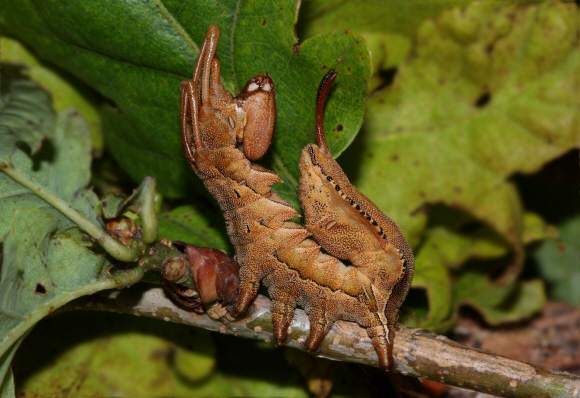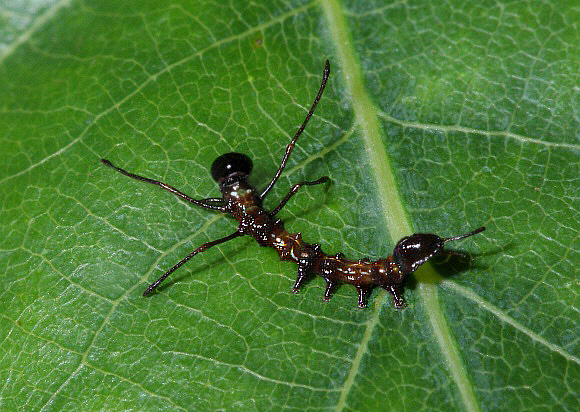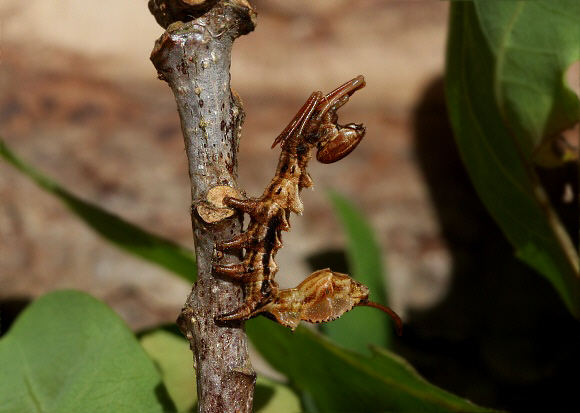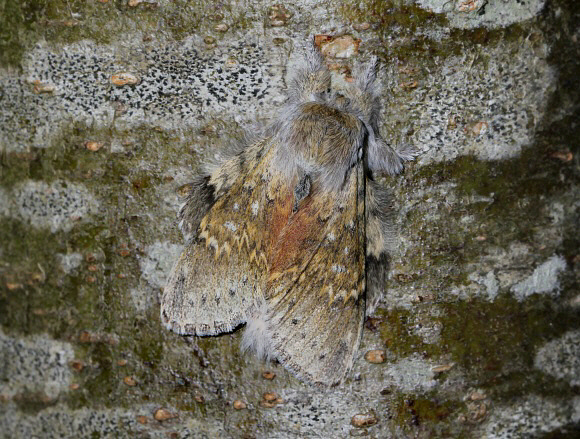
Introduction
The family Notodontidae comprises of about 3800 species. The moths are found in all regions of the world, with the greatest diversity and abundance in the Amazonian rainforests. The adults of most species are coloured in subtle hues of brown, grey and/or white, cryptically patterned with blotches or striations. Some such as the Buff-tip Phalera bucephala ( subfamily Phalerinae ) are wonderfully disguised as snapped twigs. Others include the Pale Prominent Pterostoma palpina ( Notodontinae ) which is almost indistinguishable from a piece of broken wood, and the Lobster moth Stauropus fagi ( Heterocampinae ) which looks exactly like a bit of tree bark.
The genus Stauropus is usually classified as belonging to the Notodontinae but some workers place it in the Heterocampinae, or include it ( and the closely allied genus Cerura ) in the Stauropinae.
There are 10 Stauropus species, distributed variously from Europe to Indonesia.
Stauropus fagi is the commonest and most widespread species in the genus. It is found across most of Europe and temperate Asia.
Habitats
This moth inhabits deciduous woodland at altitudes between sea level and about 1000m.
Lifecycle
The eggs are laid singly on the leaves of oak Quercus, beech Fagus, birch Betula or hazel Corylus.
The newly hatched caterpillar has extraordinary long legs and a swollen anal segment, and in the 1st and 2nd instars is ant-like in appearance. It moves about nervously just like an ant, and attacks any other small insect that approaches, including other Stauropus caterpillars. As it grows older it develops fleshy lappets and a greatly swollen anal segment which is arched scorpion-style over the back.
The fully grown caterpillar is wonderfully disguised and almost impossible to locate in the wild, as its posture and general appearance perfectly simulates a bunched up dead leaf or bract. If it is molested however the “dead leaf” suddenly springs into life, and the larva thrusts out its long legs menacingly, although it is not known whether this actually deters birds from attacking and eating it.
The pupa is formed within a strong silk cocoon spun amongst a bunch of dead leaves.


Adult
The adult moth emerges in May or June. It has a long “furry” abdomen. The dark brown wings are held in such a way that the costa and apex of the hindwings protrude from behind the forewings. When at rest on tree trunks during the daytime the pattern blends perfectly with the rough bark.
The moth gets its name from the appearance of the caterpillar, which has been likened to a lobster.

